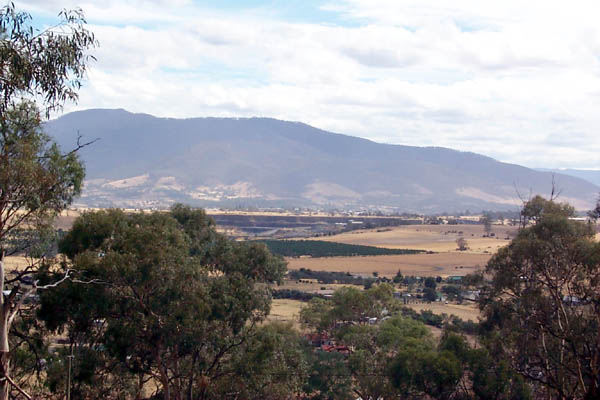
The USS Abraham Lincoln visited Hobart Tasmania just four days after leaving Perth on the west coast.
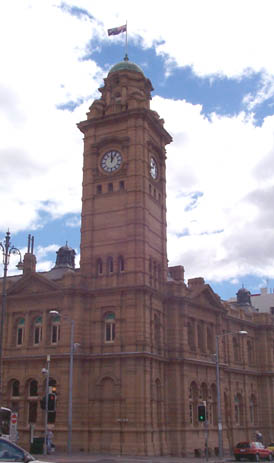
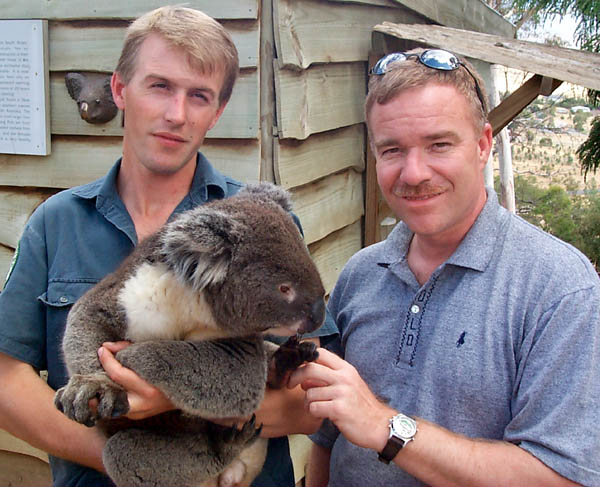

A clock tower in Hobart
The koala is probably the most famous of all Australian native animals. They are found along the East Coast of Australia from the cold climate of Tasmania up to the tropics of Northern Queensland. Koalas feed almost entirely on the leaves of certain eucalyptus trees which makes them small lie cough medicine. They usually rest in the fork of a tree for 20 hours a day, climbing to the tree tops around dusk to feed. They will bite or claw a human if approached. The male koala in this photo was hand raised and is very accustomed to human touch.
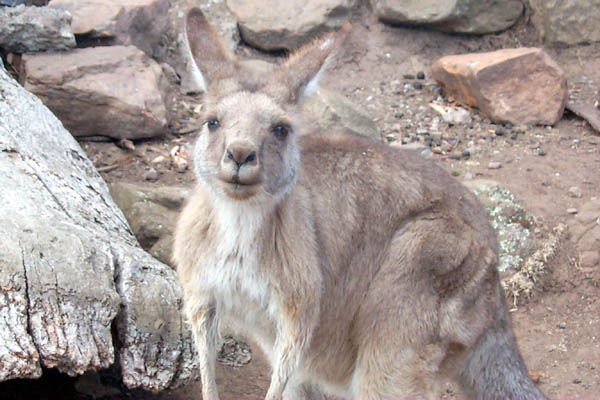
Kangaroos are the giants of the marsupial world and true symbols of Australia’s unique wildlife. There are 47 different species of kangaroos with the Red Kangaroo being the largest. A large kangaroo will stand over 6 feet tall and weigh over 200 pounds. It can clear over 10 yards in a single hop and reach a speed of 35 miles an hour. Kangaroos that inhabit the Australian interior must survive long periods of dought.
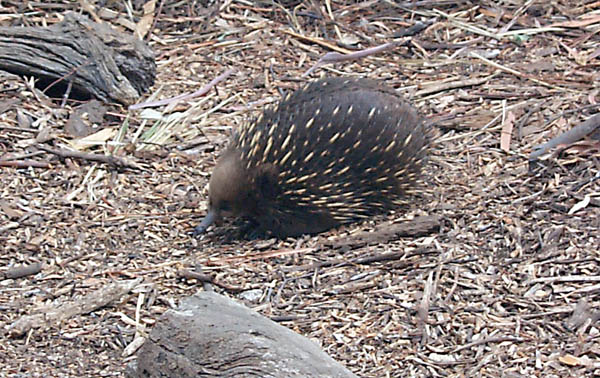
Echidna are readily recognized by their covering of long spines. They feed on ants and termites using their long and powerful forelegs to dig into the nest and then catch the ant with their long sticky tongue. They are solitary and seek shelter under thick gushes or in hollow logs. Echidnas are one of only two egg laying mammals in the world, the Platypus being the other monotreme. I saw plenty of them white water rafting but dared not bring my digital camera into the raft. Good thing as I was pulled into the water more than one time during the water fights.
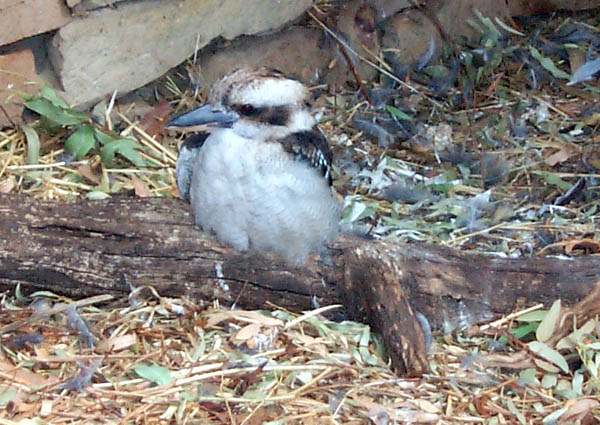
The laughing kookabura is probably the best known of all Australian birds. It is about 10 inches in length with a heavy bill. Kookaburras are territorial and live in familes consisting of a dominant pair and several offspring. Kookaburras usually mate for lige and the whole family cares for the young. Their rollicing calls - that famous laughter - is used to help defend these territiories and warn othe members of the family.
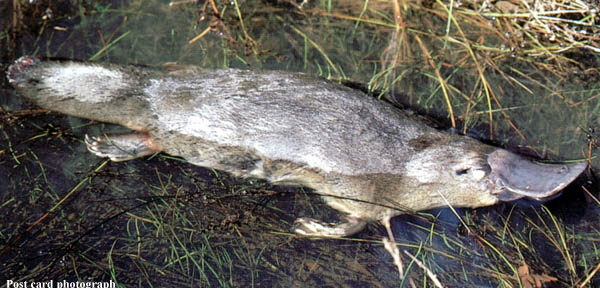
Although I saw plenty of Platypus on the river during my white water rafting trip these animals are just too shy to get close enough to. The platypus is certainly one of the most extraordinary animals found in Australia. It lives in burrows dug into the banks of lakes and streams. The platypus feeds mainly on tadpoles, small fish, larvae and water snails which it sucks up like a vacuum cleaner.
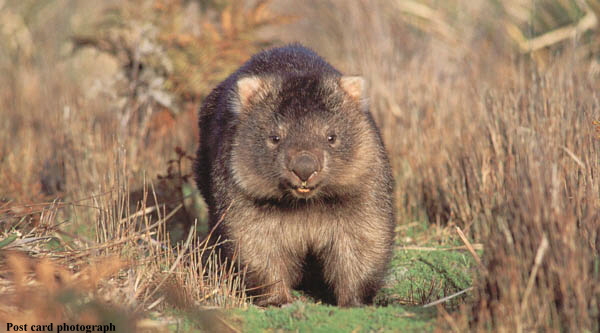
Australia has two kinds of wombats, the “common wombat” and the rare “hairy nose wombat”.The wombat is a large marsupial that eats grass and lives in underground burrows. Durning summer, wombats are mainly nocturnal. emerging above ground when the air is cool.
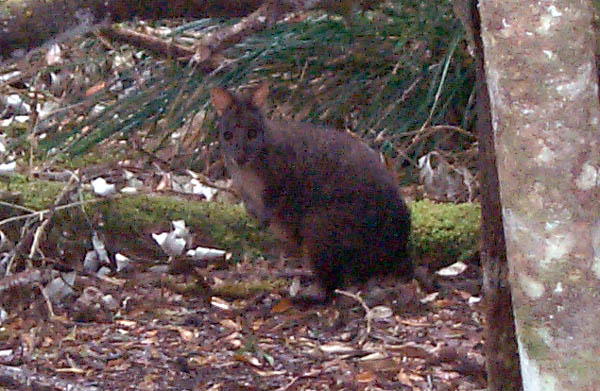
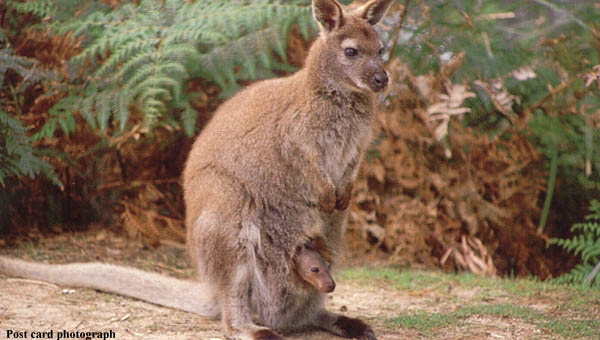
The Tasmanian wallaby is a very shy kangaroo looking animal. On my tour to Mount Field National Park I saw many of the small animals about the trail. Unfortunately they like to stick to the shadows and the cloud overcast didn’t help.
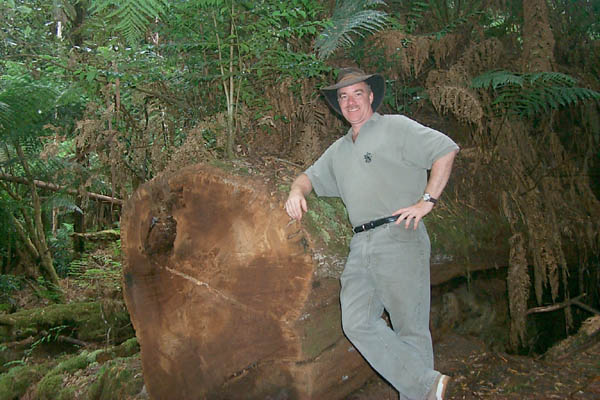
On my final day of liberty in Australia I took a walk about - that’s Australian for a hike - at Mount Field National Park which is located about an hour and a half’s drive north of Hobart. The park is one of Tasmania’s oldest and most loved national parks. It has a wide variety of scenic features and wildlife. The day was a cool and wet one with some light showers.
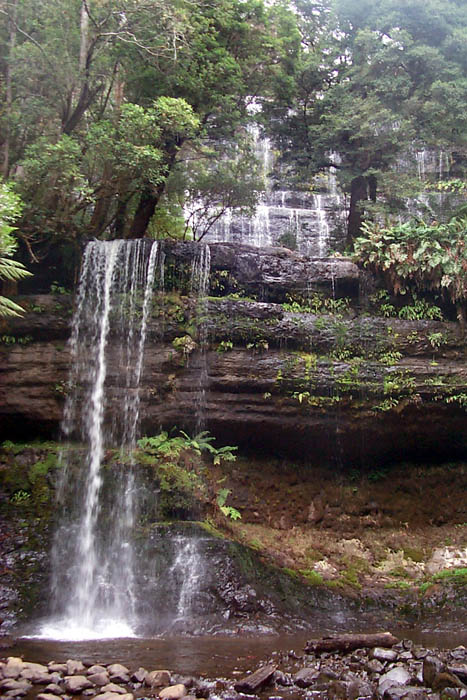
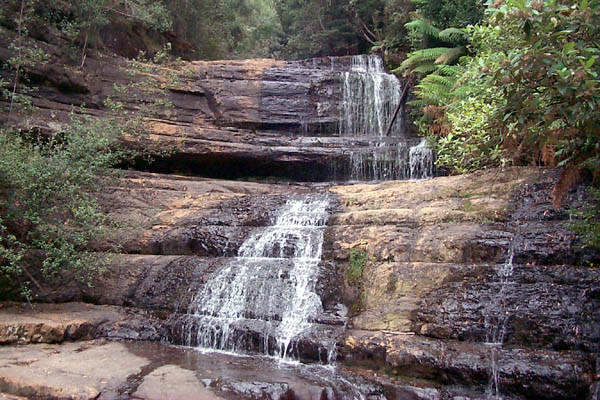
Russell Falls is one of Tasmania’s best known scenic attractions. Green and graceful ferns line falls while gian eucalypts and myrtles tower overhead. Below is Lady Barron falls